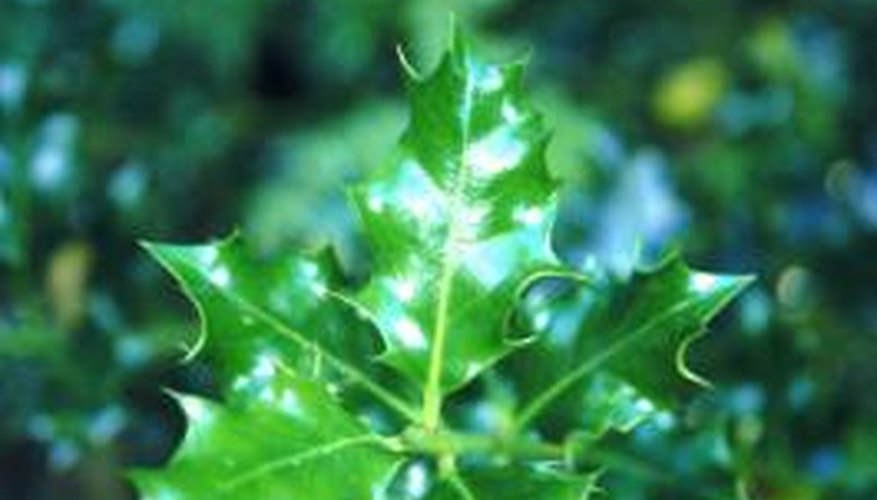Holly is a flowering plant of the genus Ilex and the Aquifoliaceae family. Ilex consists of more than 600 plant species. Hollies are ornamental plants known for their red berries and bright-green foliage. Holly berries are an important food source for wild animals and birds. However, they are toxic to humans. Seventy-five to 100 different arthropod species pests invade holly plants, according to North Carolina State University.
Flies and Moths
Holly leaf miner (Phytomyza ilicicola) is a species of chewing insect that invades holly plants. The larvae starts as little, yellow maggots and mature to flies. Holly leaf miners scare the underside of holly leaves. Holly loopers (Thysanopyga intractata) are medium-green to light-brown caterpillars that become moths. This pest has a three pairs of anal prologs and another pair near its abdomen. Holly looper eats notches in the leaves.
- Holly leaf miner (Phytomyza ilicicola) is a species of chewing insect that invades holly plants.
Mites
Southern red mites (Oligonychus ilicis) have nearly all-black bodies and light yellow-brown legs. These pests lay eggs on the underside of the leaves. During summer and winter, holly plants exhibit leave discolouration as a sign of a Southern red mite infestation. The false spider mite (Tenuipalpidae) is a small arachnid with eight legs. It spins protective webs over plant surfaces. Females have black markings, while males are reddish. The larvae are orange shade. False spider mites stunt the growth of holly leaves and cause bronzing of the typically green-hued foliage.
- Southern red mites (Oligonychus ilicis) have nearly all-black bodies and light yellow-brown legs.
Scales
Tea scales (Fiorinia theae) are white and brown oblong insects that feed on holly leaves. These pests group in chalky masses on the undersides of holly leaves. Tea scales are the cause of yellow irregular shaped spots on the upper surface of holly leaves. Florida red scales (Chrysomphalus aonidum) have dark reddish-brown bodies. The females are wingless and legless, while males have well developed legs and one set of wings but no mouthparts. Florida red scale females feed on holly leaves with their mouthparts and ingest the juices from the leaves.
- Tea scales (Fiorinia theae) are white and brown oblong insects that feed on holly leaves.
Beetles
The two-banded Japanese weevil (Callirhopalus bifasciatus) is a light- to dark-brown insect with a short snout, bands of black and brown, and white spots. The eggs have a cream tone, and females lay them in groups in folded leaves. This beetle creates jagged holes and notches in new holly growth and shoots. Black vine weevil (Otiorhynchus sulcatus) is an insect with a short snout, a bumpy thorax and wings. The eggs of this beetle have a smooth, shiny surface light in colour but changes to brown with age. This insect chews on holly plants, producing notches and missing parts on the foliage.
- The two-banded Japanese weevil (Callirhopalus bifasciatus) is a light- to dark-brown insect with a short snout, bands of black and brown, and white spots.
- Black vine weevil (Otiorhynchus sulcatus) is an insect with a short snout, a bumpy thorax and wings.
